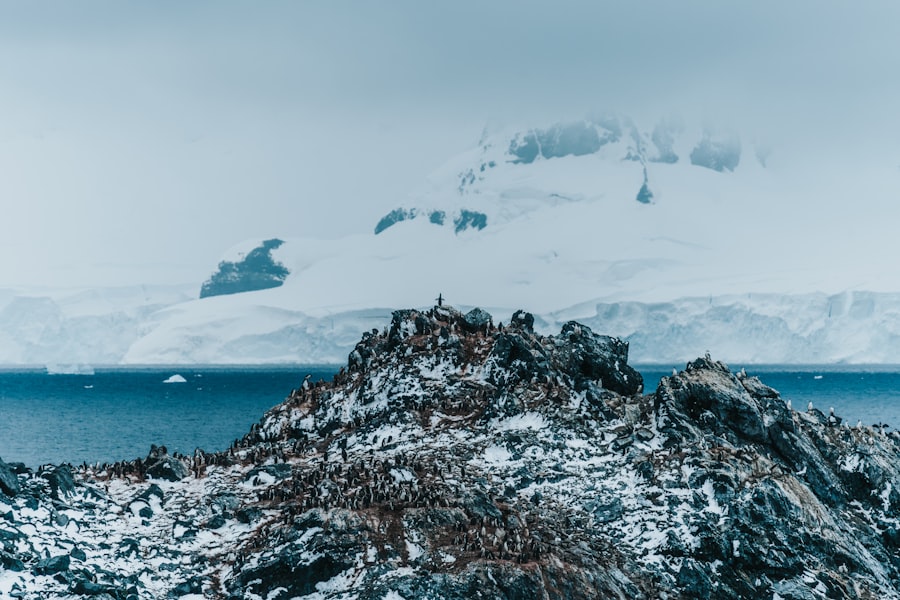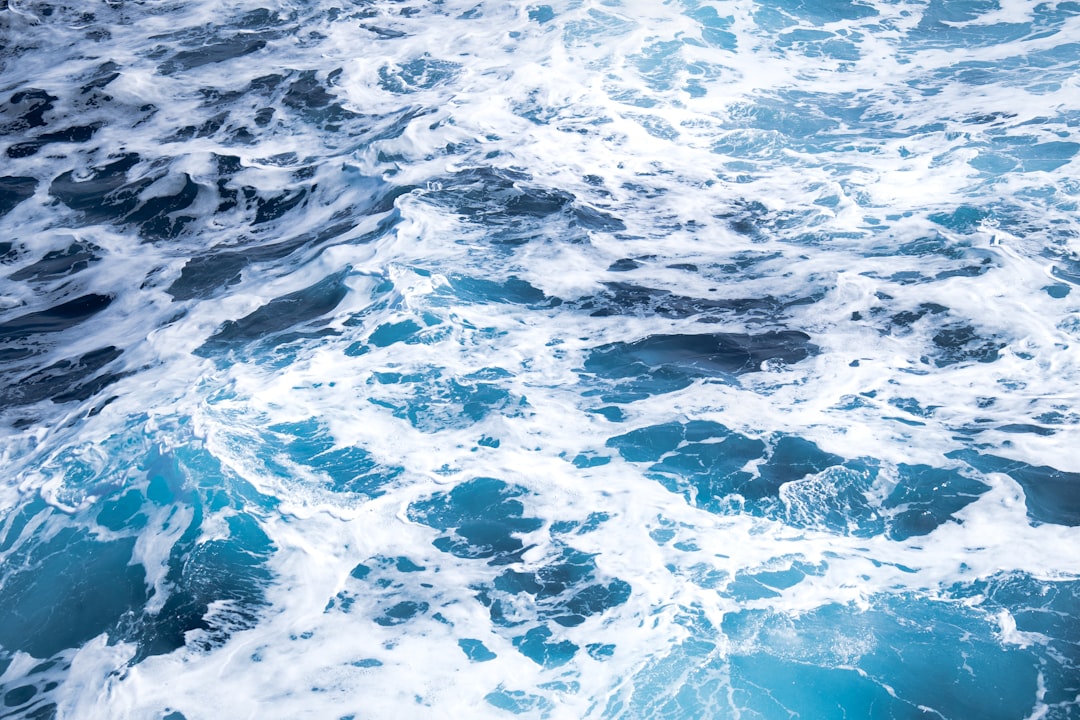The Drake Passage, a body of water that separates South America from Antarctica, has a rich and storied history that dates back centuries. Named after the English explorer Sir Francis Drake, who navigated these treacherous waters in the late 16th century, the passage has long been a focal point for explorers, scientists, and adventurers alike. Drake’s journey was not merely a quest for discovery; it was also a pursuit of wealth and trade routes.
His successful navigation through these turbulent waters marked a significant milestone in maritime history, paving the way for future expeditions to the southernmost continent. Over the years, the Drake Passage has witnessed countless voyages, each contributing to its legacy. The passage became a critical route for whalers and sealers in the 19th century, as they sought the abundant marine life in the Southern Ocean.
The harsh conditions and unpredictable weather patterns made navigation perilous, yet many were drawn to the promise of fortune. As scientific exploration gained momentum in the 20th century, the Drake Passage became a vital area for research on climate change and marine ecosystems. Today, it stands as a testament to human resilience and curiosity, continuing to attract those eager to explore its depths.
Key Takeaways
- The Drake Passage is named after the famous explorer Sir Francis Drake, who was the first to navigate these treacherous waters in 1578.
- Navigating the Drake Passage presents challenges such as strong winds, rough seas, and unpredictable weather conditions due to its location between Antarctica and South America.
- Choosing the right vessel for the journey is crucial, with considerations for stability, size, and experienced crew to ensure a safe and comfortable passage.
- Packing essentials for a voyage through the Drake Passage include warm clothing, waterproof gear, and sea sickness medication to prepare for the harsh conditions.
- Wildlife encounters in the Drake Passage are abundant, with opportunities to see penguins, whales, and various seabirds in their natural habitat.
Understanding the Challenges of Navigating the Drake Passage
Navigating the Drake Passage is not for the faint of heart. The waters are notorious for their rough seas and unpredictable weather patterns, which can change in an instant. Sailors often refer to this stretch of ocean as “the most dangerous sea in the world,” a title earned through centuries of treacherous conditions.
The confluence of the Atlantic and Pacific Oceans creates powerful currents and waves that can reach heights of over 30 feet. This makes even experienced mariners approach with caution, as the passage can quickly turn from calm to chaotic. In addition to the formidable waves, navigators must contend with icebergs and floating debris that can pose significant hazards.
The presence of ice is particularly concerning during certain times of the year when melting glaciers contribute to an increase in icebergs drifting into shipping lanes. Furthermore, fog and storms can obscure visibility, complicating navigation even further. Understanding these challenges is crucial for anyone considering a journey through the Drake Passage, as preparation and respect for the elements are key to a successful crossing.
Choosing the Right Vessel for the Journey

Selecting an appropriate vessel for traversing the Drake Passage is paramount to ensuring safety and comfort during the journey. Given the unpredictable nature of the waters, sturdy and well-equipped ships are essential. Many adventurers opt for ice-strengthened vessels designed specifically for polar exploration.
These ships are built to withstand harsh conditions, featuring reinforced hulls that can navigate through ice-laden waters with relative ease. Additionally, modern expedition vessels often come equipped with advanced navigation systems and stabilizers that help mitigate the effects of rough seas. For those seeking a more luxurious experience, there are also cruise ships that offer comfortable accommodations while still being capable of handling the challenges of the Drake Passage.
Regardless of the type of vessel chosen, it is crucial that travelers prioritize safety features and crew expertise when making their selection. A well-chosen ship can make all the difference in transforming a daunting journey into an unforgettable adventure.
Packing Essentials for a Voyage through the Drake Passage
| Item | Quantity | Importance |
|---|---|---|
| Waterproof Jacket | 1 | High |
| Warm Layers | 3 | High |
| Waterproof Pants | 1 | High |
| Insulated Boots | 1 | High |
| Gloves and Hat | 1 each | High |
| Sunscreen | 1 | High |
| Camera | 1 | Medium |
| Binoculars | 1 | Medium |
| Seasickness Medication | As needed | High |
Preparing for a voyage through the Drake Passage requires careful consideration of what to pack. Given the unpredictable weather conditions, layering clothing is essential. Travelers should bring waterproof outer layers, thermal undergarments, and insulated jackets to stay warm and dry during their journey.
Accessories such as gloves, hats, and scarves are also important to protect against biting winds and cold temperatures. Footwear should be sturdy and waterproof, as passengers may encounter wet decks or icy surfaces. In addition to clothing, travelers should consider packing personal items that will enhance their experience.
Binoculars are invaluable for wildlife watching, allowing passengers to spot seals, whales, and seabirds from a distance. A good camera is also essential for capturing the breathtaking landscapes and unique wildlife encounters that await in Antarctica. Other useful items include sunscreen to protect against UV rays reflecting off ice and snow, as well as seasickness remedies to prepare for potential rough waters.
By packing thoughtfully, adventurers can ensure they are well-equipped for their journey through this remarkable passage.
Wildlife Encounters in the Drake Passage
The Drake Passage is not only known for its challenging navigation but also for its rich biodiversity. As travelers embark on their journey, they are often treated to spectacular wildlife encounters that make the experience truly unforgettable. The waters are teeming with marine life, including various species of whales such as humpbacks, orcas, and minke whales.
These majestic creatures can often be spotted breaching or spouting water as they navigate through the waves. In addition to whales, seabirds such as albatrosses and petrels grace the skies above the passage. The sight of these magnificent birds soaring effortlessly on ocean breezes is a highlight for many travelers.
The region is also home to seals and penguins that inhabit nearby islands and ice floes. Observing these animals in their natural habitat provides a unique perspective on life in one of the most remote areas of the world. For wildlife enthusiasts, navigating the Drake Passage offers an unparalleled opportunity to witness nature’s wonders up close.
Weather and Climate Considerations for the Journey

The weather in the Drake Passage can be notoriously unpredictable, making it essential for travelers to stay informed about current conditions before embarking on their journey. The region experiences a maritime climate characterized by strong winds and rapidly changing weather patterns. Storms can develop quickly, leading to rough seas that can challenge even seasoned sailors.
As such, it is advisable for travelers to monitor weather forecasts closely and be prepared for sudden changes. Temperatures in the Drake Passage vary significantly depending on the time of year. During summer months (November to March), temperatures can range from just above freezing to mild conditions suitable for outdoor exploration.
However, even in summer, travelers should be prepared for cold snaps and inclement weather. Winter months (June to August) bring harsher conditions with freezing temperatures and increased ice presence. Understanding these climate considerations is crucial for ensuring a safe and enjoyable voyage through this remarkable passage.
Safety Precautions and Emergency Protocols
Safety should always be a top priority when navigating the Drake Passage. Travelers must familiarize themselves with safety protocols established by their vessel’s crew before setting sail. This includes understanding emergency procedures such as man-overboard drills, fire safety measures, and evacuation routes.
Crew members are trained to handle emergencies effectively; however, passengers should also take personal responsibility by paying attention during safety briefings. In addition to following onboard protocols, travelers should equip themselves with personal safety gear such as life jackets when required and ensure they know how to use them properly. It is also wise to keep personal belongings secured during rough seas to prevent accidents or injuries caused by shifting items.
By remaining vigilant and adhering to safety guidelines, adventurers can significantly reduce risks associated with navigating this challenging passage.
Tips for Overcoming Seasickness on the High Seas
Seasickness is a common concern for many travelers embarking on a journey through the Drake Passage due to its notorious rough waters. However, there are several strategies that individuals can employ to mitigate symptoms and enjoy their voyage more fully. One effective approach is to choose accommodations located in the middle of the ship where motion is less pronounced compared to cabins at either end.
Additionally, staying hydrated and consuming light meals can help alleviate nausea. Over-the-counter medications specifically designed for motion sickness can also be beneficial; travelers should consult with their healthcare provider before departure to determine which options are best suited for them. Natural remedies such as ginger or acupressure wristbands may provide relief as well.
Engaging in activities while at sea—such as enjoying scenic views from deck or participating in onboard lectures—can distract from feelings of discomfort. By taking proactive measures against seasickness, adventurers can enhance their overall experience while navigating this remarkable passage.
The Importance of Experienced Crew and Guides
The expertise of an experienced crew is invaluable when navigating the Drake Passage. Crew members possess extensive knowledge about local conditions, navigation techniques, and safety protocols that are essential for ensuring a smooth journey through these challenging waters. Their familiarity with potential hazards allows them to make informed decisions that prioritize passenger safety while maximizing opportunities for exploration.
Guides play an equally important role in enhancing travelers’ experiences during their voyage. Knowledgeable guides provide insights into wildlife behavior, geological formations, and historical context that enrich each excursion ashore or at sea. Their passion for sharing information fosters a deeper appreciation for the unique environment surrounding Antarctica and its surrounding waters.
By choosing vessels staffed by skilled professionals, adventurers can embark on their journey with confidence knowing they are in capable hands.
Cultural and Historical Highlights along the Route
As travelers navigate through the Drake Passage en route to Antarctica, they encounter various cultural and historical highlights that add depth to their journey. One notable stop is Ushuaia, Argentina—the southernmost city in the world—where many expeditions begin their voyages into these remote waters. Ushuaia boasts a rich history tied to maritime exploration and serves as a gateway for adventurers seeking to explore Antarctica’s wonders.
Another significant cultural highlight includes visits to research stations established by various countries on Antarctic landmasses or islands along the route. These stations serve as hubs for scientific research focused on climate change, marine biology, and glaciology among other fields—offering travelers insight into ongoing efforts aimed at understanding this fragile ecosystem’s complexities. Engaging with researchers provides an opportunity for meaningful dialogue about conservation efforts while fostering appreciation for humanity’s connection with nature.
The Ultimate Adventure: Navigating the Drake Passage
Navigating the Drake Passage represents one of life’s ultimate adventures—a journey filled with challenges that culminate in breathtaking rewards.
The sense of accomplishment felt upon successfully crossing this formidable passage is unparalleled; it serves as a testament not only to human resilience but also curiosity about our planet’s most remote corners.
For those willing to embrace both uncertainty and wonderment inherent in such an expedition—the Drake Passage offers an unforgettable experience that transcends mere travel; it becomes an exploration into one’s own spirit of adventure while forging connections with fellow explorers who share similar passions for discovery amidst nature’s grandeur. Ultimately, navigating this remarkable passage stands as an invitation—to step beyond comfort zones—and embark on an extraordinary journey into one of Earth’s last frontiers.
The Drake Passage is a notorious stretch of water that connects the Atlantic and Pacific Oceans, known for its challenging sailing conditions and unpredictable weather. Ships navigating this route must be prepared for the rough seas and strong winds that characterize this region. For those interested in learning more about the geographical significance and the challenges faced by vessels traversing this passage, a related article can be found on MyGeoQuest. This article provides insights into the historical and modern-day experiences of ships sailing through the Drake Passage. You can read more about it by visiting this link.
WATCH NOW! Drake Passage: Earth’s Deadliest Waters Revealed
FAQs
What is the Drake Passage?
The Drake Passage is the body of water between the southern tip of South America and the northern tip of the Antarctic Peninsula. It connects the southwestern part of the Atlantic Ocean with the southeastern part of the Pacific Ocean.
Why is the Drake Passage known for its rough seas?
The Drake Passage is known for its rough seas due to the convergence of the Atlantic, Pacific, and Southern oceans. The strong westerly winds and the lack of any landmass to slow down the wind or waves contribute to the rough conditions.
What is the best time to travel through the Drake Passage on a ship?
The best time to travel through the Drake Passage on a ship is during the austral summer, which is from November to March. During this time, the weather is relatively milder, and the sea conditions are generally calmer.
What are some of the wildlife that can be seen in the Drake Passage?
The Drake Passage is home to a diverse range of wildlife, including various species of seabirds such as albatrosses, petrels, and penguins. It is also a prime location for whale watching, with species such as humpback whales, orcas, and southern right whales commonly spotted in the area.
What safety precautions should be taken when traveling through the Drake Passage on a ship?
When traveling through the Drake Passage on a ship, it is important to follow all safety protocols provided by the ship’s crew. This may include securing all loose items, wearing appropriate clothing for the cold and windy conditions, and being mindful of any potential sea sickness. It is also advisable to consult with a medical professional before the journey, especially for those prone to motion sickness.
